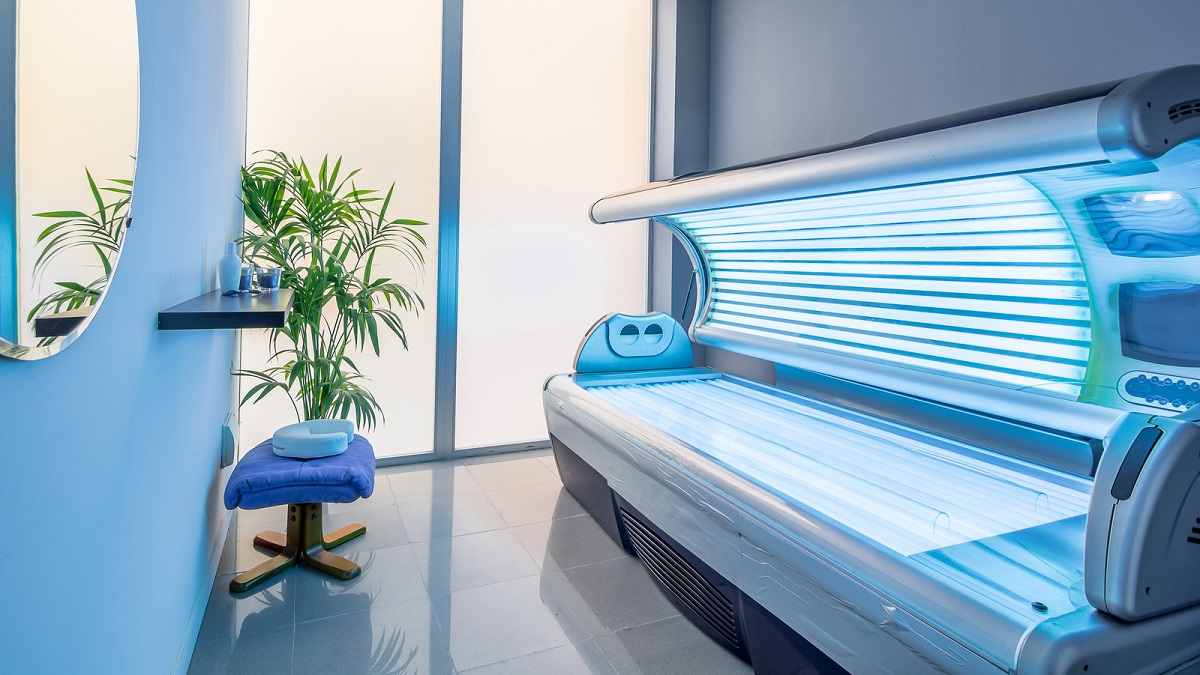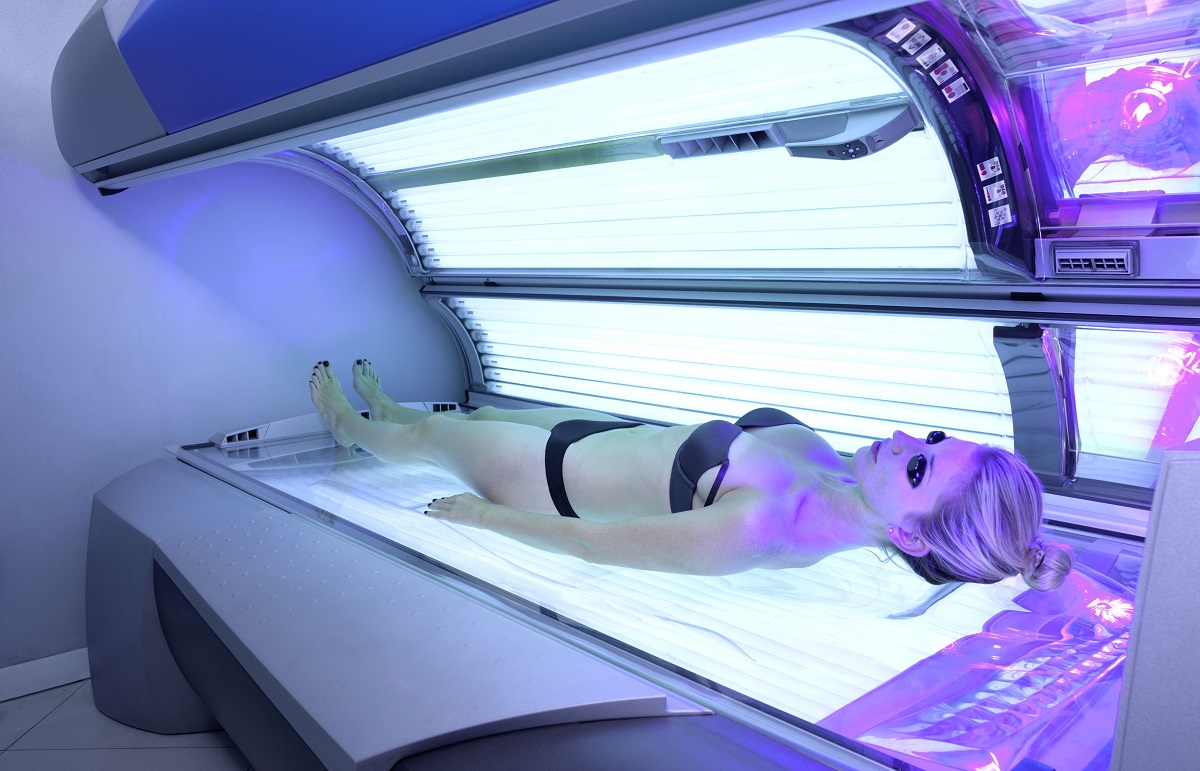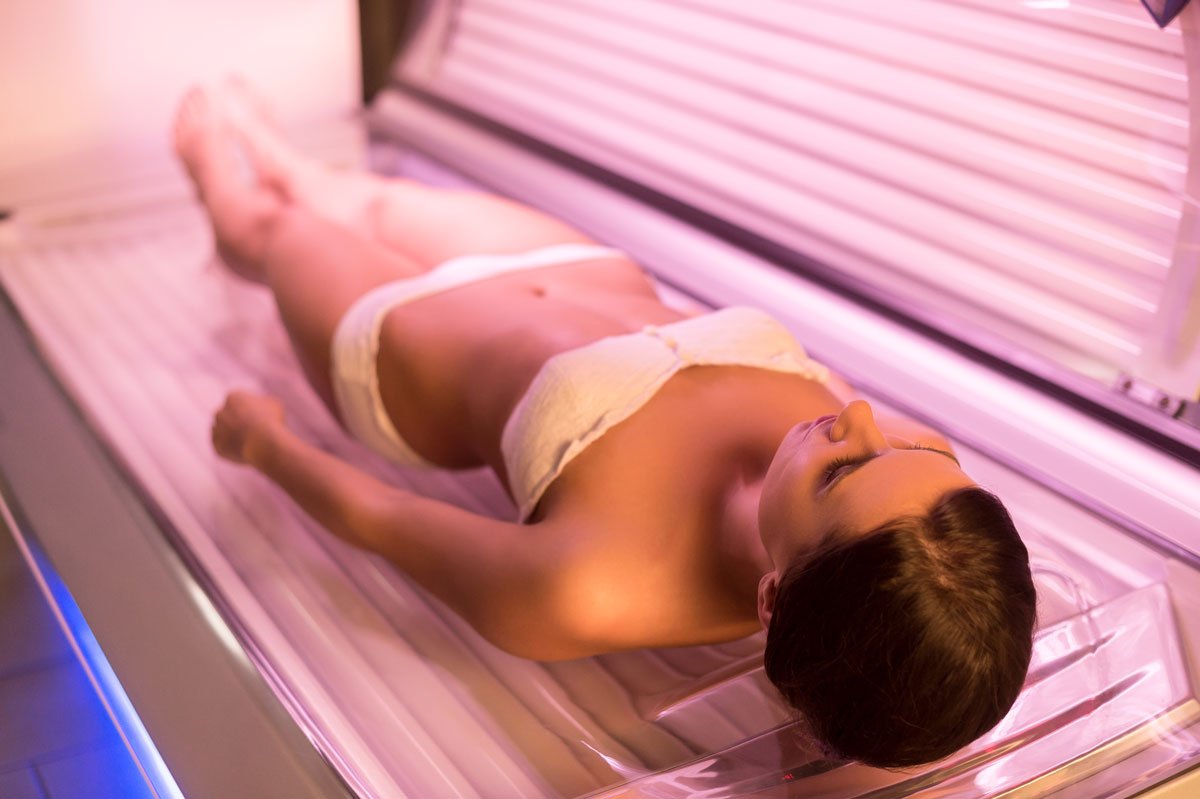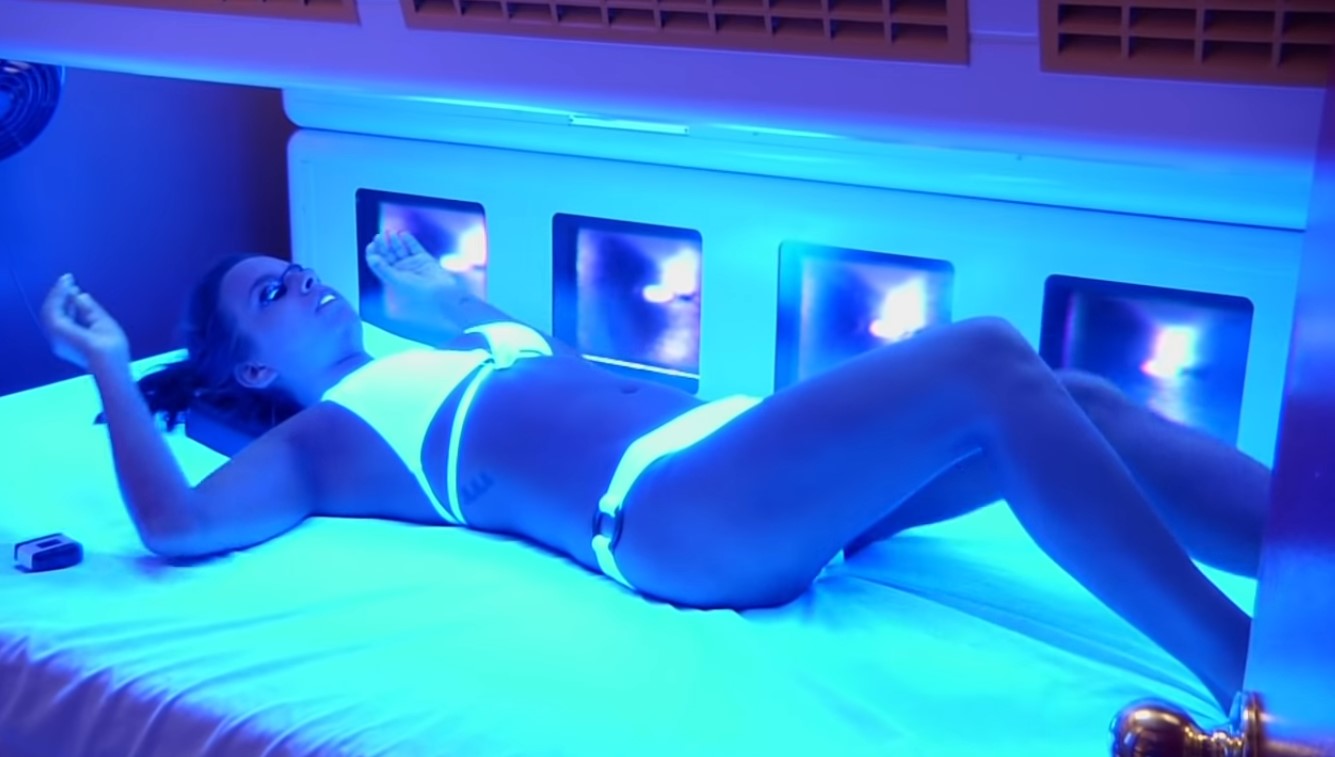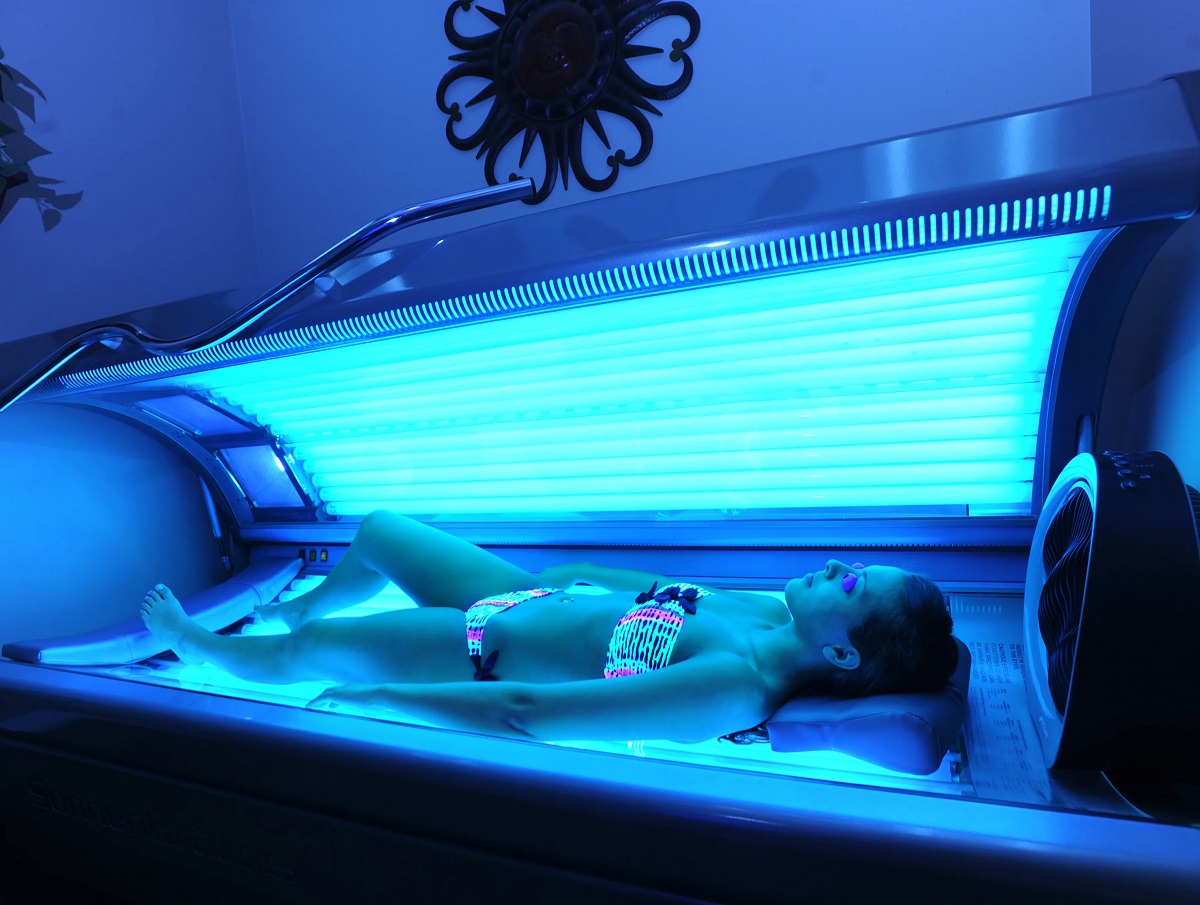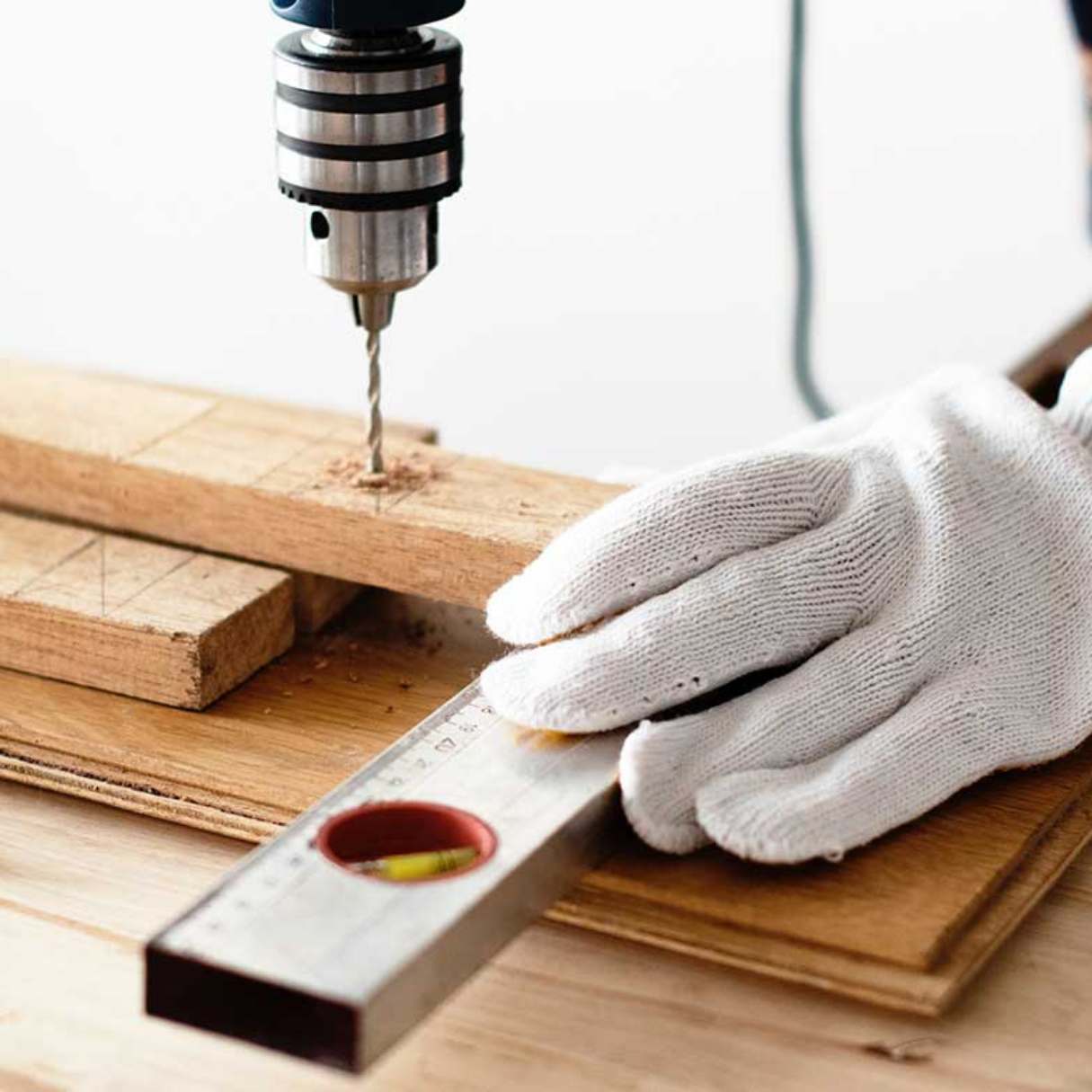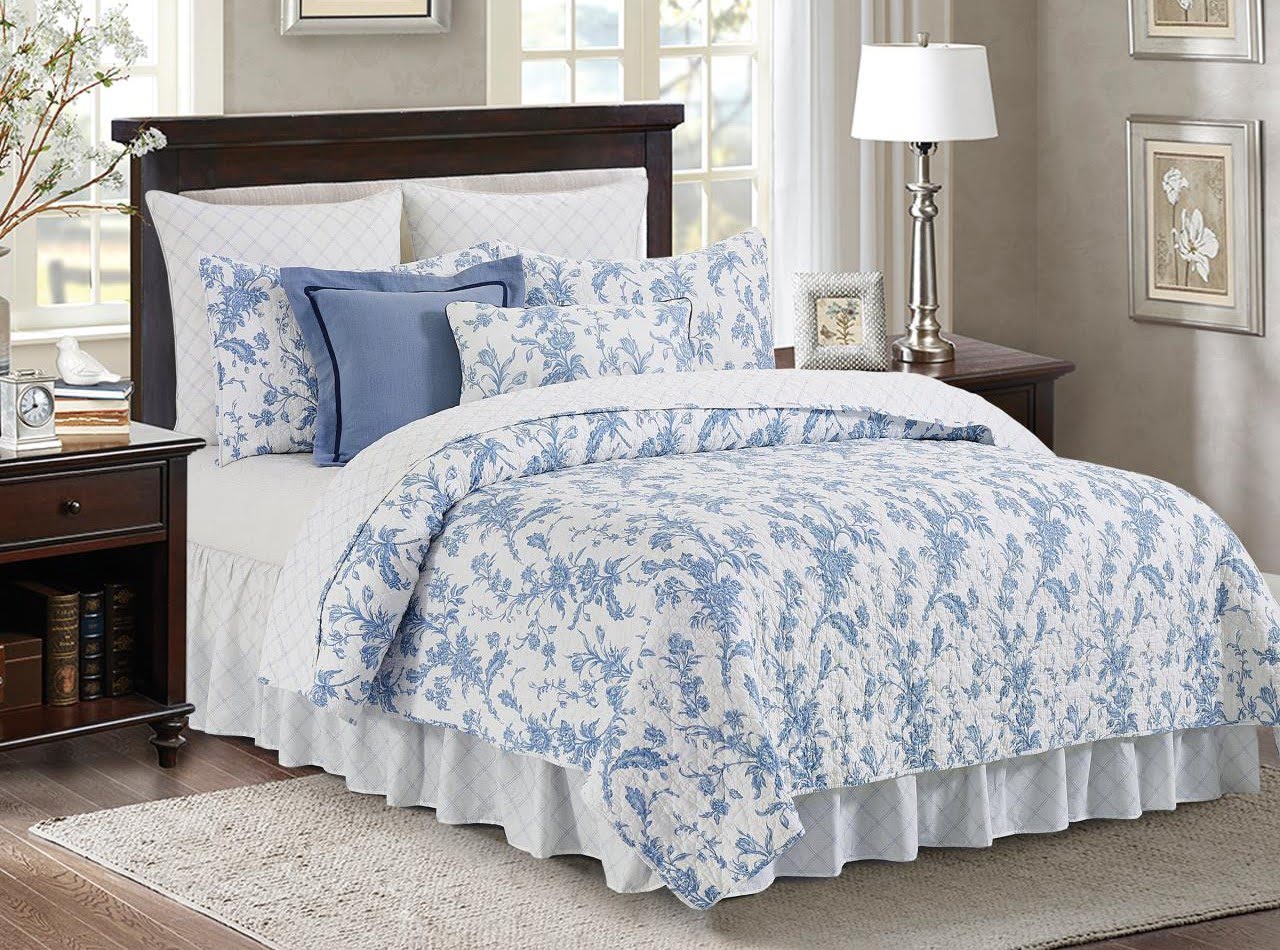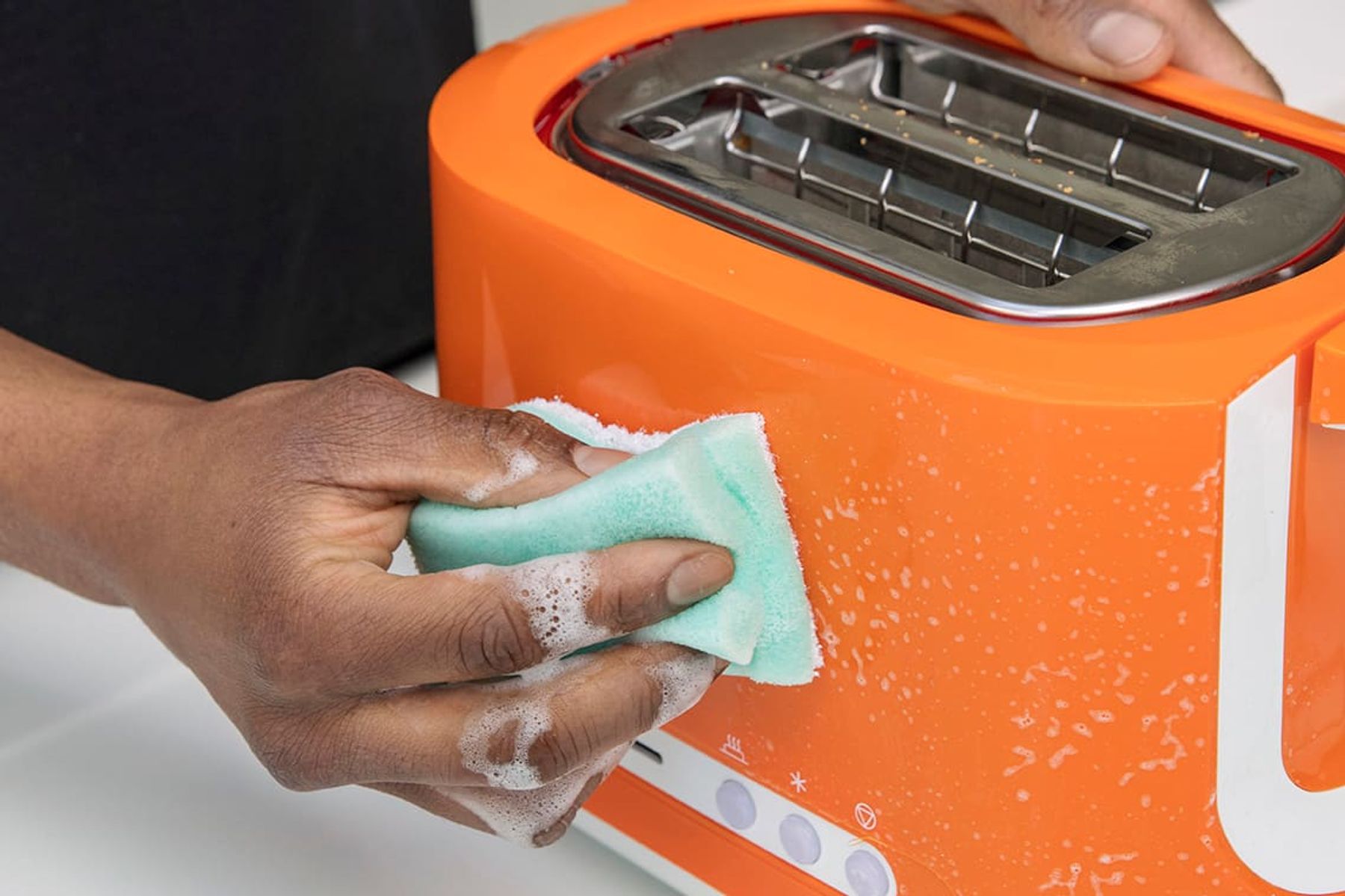Home>Furniture>Bedroom Furniture>How To Use A Tanning Bed Safely
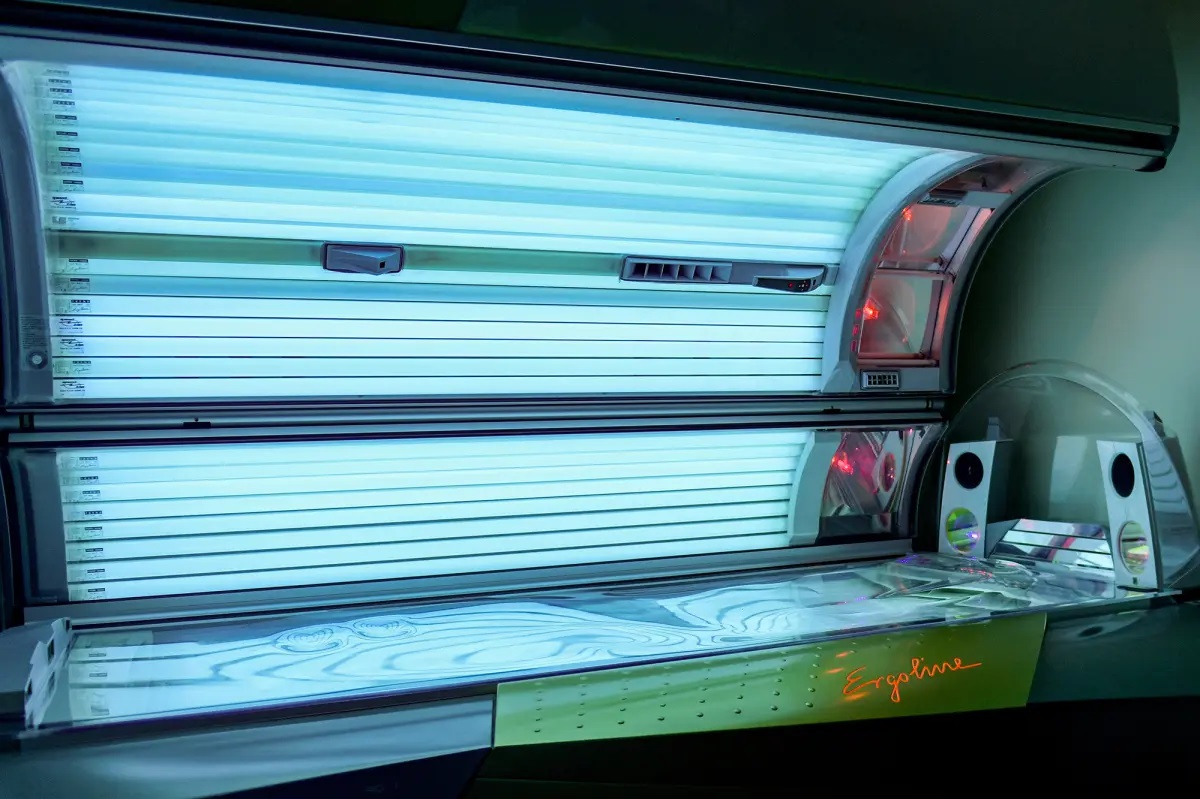

Bedroom Furniture
How To Use A Tanning Bed Safely
Modified: April 22, 2024
Learn how to safely use a tanning bed in the comfort of your own bedroom. Protect your skin while achieving a beautiful, sun-kissed glow with our expert tips on bedroom furniture.
(Many of the links in this article redirect to a specific reviewed product. Your purchase of these products through affiliate links helps to generate commission for Storables.com, at no extra cost. Learn more)
Introduction
Welcome to the world of tanning beds! These magnificent devices have become a popular choice for individuals looking to achieve that sun-kissed glow all year round. Whether you’re preparing for a vacation or simply want to enjoy a healthy tan, tanning beds provide a convenient and efficient way to achieve your desired look.
In this article, we will explore the ins and outs of tanning beds, including their benefits, potential risks, and how to use them safely. We’ll also discuss the importance of proper preparation, safety guidelines, and aftercare to ensure that you have a positive and enjoyable tanning bed experience.
Before we dive in, it’s important to note that while tanning beds can provide a beautiful tan, they should be used with caution. Overexposure to UV rays can have adverse effects on your skin and overall health. By following the guidelines outlined in this article, you can minimize the risks and enjoy the benefits of tanning beds safely.
So, if you’re ready to embark on your tanning bed journey, let’s get started by understanding how these devices work and what makes them so popular.
Key Takeaways:
- Tanning beds offer a convenient way to achieve a tan, but it’s crucial to prioritize safety. Proper preparation, safety guidelines, and aftercare are essential for minimizing risks and enjoying a healthy tanning experience.
- Understanding the potential risks of tanning beds, using safety guidelines, and practicing proper aftercare are vital for maintaining skin health. Moderation, caution, and regular monitoring of skin changes are key for a safe and enjoyable tanning journey.
Read more: How To Tan In A Tanning Bed
Understanding Tanning Beds
Tanning beds, also known as sunbeds, are devices that emit ultraviolet (UV) radiation to simulate the sun’s rays and promote the tanning of the skin. They consist of a bed-like structure with a collection of UV lamps that emit UVA, UVB, or a combination of both types of rays.
When you lie on a tanning bed, the UV radiation penetrates the outer layer of your skin, activating melanin production. Melanin is the pigment responsible for giving your skin its color. As melanin levels increase, your skin darkens, resulting in a tan.
There are two main types of tanning beds: conventional and high-pressure. Conventional tanning beds emit a mix of UVA and UVB rays, while high-pressure beds predominantly emit UVA rays. Both types can provide a tan, but high-pressure beds are often favored for their ability to create a deeper and longer-lasting tan.
Tanning beds offer a controlled environment where you can customize your tanning experience based on your skin type and desired results. With adjustable timers and intensity levels, you can gradually increase your exposure time and UV output to achieve your desired shade of tan.
Additionally, many tanning beds feature different types of bulbs, such as bronzing bulbs or facial bulbs, to target specific areas or enhance particular aspects of your tan. Some even include built-in cooling systems to keep you comfortable during your tanning sessions.
Now that we have a basic understanding of tanning beds and how they work, let’s explore the potential risks associated with their use in the next section.
Potential Risks of Tanning Beds
While tanning beds provide a convenient way to achieve a tan, it’s important to be aware of the potential risks involved. Exposure to UV radiation from tanning beds can have various detrimental effects on your skin and overall health.
One of the primary concerns is the increased risk of skin cancer. The UV radiation emitted by tanning beds can damage the DNA in your skin cells, leading to mutations that can result in skin cancer, including melanoma, the deadliest form of the disease. Regular or excessive use of tanning beds significantly increases the risk of developing skin cancer.
Not only can tanning beds increase your risk of skin cancer, but they can also accelerate the aging process of your skin. UV radiation breaks down collagen and elastin fibers in the skin, leading to the formation of wrinkles, sagging, and age spots. Premature aging of the skin is a common consequence of frequent tanning bed use.
In addition, tanning beds can exacerbate existing skin conditions such as eczema and psoriasis. The UV rays can cause inflammation, redness, and itchiness, making these conditions more difficult to manage. People with fair skin, a history of sunburns, or a family history of skin cancer are particularly vulnerable to the risks associated with tanning bed use.
Eye damage is another concern when using tanning beds. UV radiation can harm the delicate tissues of the eyes, potentially leading to conditions such as cataracts or damage to the cornea. It is crucial to wear protective goggles specifically designed for tanning bed use to shield your eyes from the harmful rays.
Given these risks, it’s essential to approach tanning bed use with caution and moderation. By following proper safety guidelines and being aware of your skin’s limitations, you can minimize the potential harm while still enjoying the benefits of tanning beds. In the next section, we will discuss how to prepare for tanning bed sessions to ensure a safe and effective tanning experience.
Preparing for Tanning Bed Use
Before you hop onto a tanning bed, it’s crucial to take certain steps to prepare your skin and maximize the effectiveness of your tanning session. Proper preparation can help ensure an even and long-lasting tan while reducing the risk of potential side effects.
The first step in preparation is to exfoliate your skin. Use a gentle exfoliating scrub or brush to remove dead skin cells and create a smooth surface for the tanning bed rays to penetrate. Pay extra attention to rough areas like elbows, knees, and ankles. Exfoliation will help promote an even tan and prevent any blotchiness or streaks.
Moisturizing your skin is another important aspect of preparation. Hydrated skin not only absorbs UV rays more evenly but also minimizes the risk of dryness or irritation. Choose a lightweight, oil-free moisturizer and apply it to your entire body, paying close attention to areas prone to dryness.
It’s essential to remove any makeup, oils, or lotions from your skin before tanning bed use. These substances can create a barrier and interfere with the penetration of UV rays. Make sure your skin is clean and free from any residues by using a gentle cleanser and rinsing thoroughly before your session.
Consider wearing sunscreen on areas that are not typically exposed to the sun, such as your nipples or the soles of your feet. This precautionary measure can help protect these sensitive areas from burning or excessive exposure to UV radiation.
Lastly, it’s vital to know your skin type and its sensitivity to UV rays. Fair-skinned individuals should start with shorter session times and lower intensity levels to avoid burning. Those with darker skin can gradually increase their exposure time and intensity. It’s always better to err on the side of caution and gradually build up your tolerance.
By following these preparation steps, you can ensure that your skin is in optimal condition for tanning bed use. In the next section, we will discuss important safety guidelines to keep in mind while using a tanning bed.
Always wear protective eyewear when using a tanning bed to prevent damage to your eyes. This is essential for safe tanning bed use.
Safety Guidelines for Using a Tanning Bed
When it comes to using a tanning bed, safety should always be a top priority. Follow these guidelines to minimize the potential risks and ensure a safe and enjoyable tanning experience:
- Start Slow: If you’re new to tanning beds or have sensitive skin, begin with short sessions of around 5-8 minutes. Gradually increase the duration as your skin becomes accustomed to UV exposure.
- Use Recommended Exposures: Follow the manufacturer’s guidelines or consult with a tanning salon professional to determine the appropriate exposure time and intensity level for your skin type.
- Protect Your Eyes: Always wear FDA-approved, UV-blocking goggles specifically designed for tanning bed use. Regular sunglasses are not sufficient to protect your eyes from the intense UV radiation.
- Monitor UV Intensity: Pay attention to the UV index displayed on the tanning bed’s control panel. Higher intensity doesn’t necessarily mean a better tan but can increase the risk of burning or skin damage.
- Be Mindful of Medications: Some medications can make your skin more sensitive to UV radiation. Consult your doctor or pharmacist to determine if any medications you’re taking could increase your risk of adverse effects from tanning bed use.
- Maintain Proper Hydration: Drink plenty of water before and after your tanning session to keep your body hydrated and reduce the risk of dehydration. Avoid overexposure to heat during tanning to minimize water loss through sweat.
- Keep Your Skin Cool: If your tanning bed has a built-in cooling system, use it to regulate your body temperature and prevent overheating. Excess heat can lead to discomfort and increase the risk of burns.
- Take Breaks: Allow your skin to recover between tanning sessions. Overexposure to UV radiation can lead to skin damage, so give your skin ample time to heal before scheduling your next session.
Remember, moderation is key when using tanning beds. Avoid excessive or prolonged exposure to UV rays, as this can increase the risk of skin cancer and premature aging. If you notice any unusual changes in your skin, such as new moles, irregular growth, or persistent redness, consult a dermatologist.
Now that you’re equipped with safety guidelines, let’s discuss additional precautions for using tanning bed lotions and goggles in the next sections.
Read more: How To Use A Tanning Bed At Planet Fitness
Using Tanning Bed Lotions and Goggles
When it comes to maximizing the benefits of tanning bed sessions and protecting your skin and eyes, the use of tanning bed lotions and goggles is essential. Let’s dive into the details of how to effectively utilize them:
Tanning Bed Lotions:
Applying a tanning bed lotion can enhance your tanning results and provide additional benefits to your skin. These lotions often contain ingredients that moisturize and nourish the skin while helping to amplify the effects of UV exposure. Here’s how to use them:
- Choose the Right Lotion: Select a tanning bed lotion that suits your skin type and desired outcome. There are different formulations available, such as bronzers, accelerators, and tinglers. Read the product labels and consult with knowledgeable salon staff to determine which lotion is best for you.
- Apply Evenly: Before tanning, apply the lotion evenly to your entire body, focusing on any areas that tend to be drier. Massage it into your skin using gentle circular motions to ensure thorough absorption.
- Avoid Overuse: Follow the recommended usage instructions provided by the manufacturer. Using too much lotion can lead to greasy skin and potentially interfere with UV penetration.
- Moisturize After Tanning: After your tanning session, moisturize your skin to lock in moisture and maintain hydration. Look for a moisturizer specifically designed for post-tanning use to soothe and replenish your skin.
Tanning Bed Goggles:
Protecting your eyes from the intense UV rays emitted by tanning beds is crucial. Standard sunglasses do not provide adequate protection, so it’s important to use goggles specifically designed for tanning bed use:
- Choose Proper Goggles: Look for goggles that meet FDA guidelines and provide 99% UVA and UVB protection. They should fit securely around your eyes and block UV rays from all angles.
- Wear Them Correctly: Place the goggles over your eyes before entering the tanning bed, ensuring that they cover the entire surface area of your eyes. Make sure they are comfortable and do not slide or pinch.
- Keep Them Clean: Regularly clean your goggles with mild soap and water to remove any residue or buildup. This will help maintain their effectiveness and prevent any potential eye irritations.
By using tanning bed lotions and goggles properly, you can enhance your tanning experience, protect your skin, and safeguard your eyes from potential harm. Now that you know how to use these accessories effectively, let’s move on to discussing the necessary aftercare for tanning bed use.
Aftercare for Tanning Bed Use
Proper aftercare is crucial to maintain the health and appearance of your skin following tanning bed sessions. The following guidelines will help you take care of your skin and prolong the longevity of your tan:
- Moisturize: After tanning, moisturize your skin with a hydrating lotion or after-sun product. This will help replenish moisture lost during the tanning process and keep your skin supple and healthy.
- Drink Plenty of Water: Hydrating your body from the inside out is important for maintaining healthy skin. Drinking enough water will help your skin stay hydrated and prevent dryness.
- Avoid Excessive Sun Exposure: Limit your exposure to direct sunlight, especially in the first 24-48 hours after tanning. Your skin is more sensitive to UV rays during this time, so give it a break to prevent overexposure and potential sunburn.
- Wear Sunscreen: When you do venture out into the sun, protect your skin by wearing a broad-spectrum sunscreen with a high SPF. This will shield your skin from harmful UV rays and prevent premature aging and skin damage.
- Prolong Your Tan: Extend the lifespan of your tan by moisturizing regularly and using a tan-extending lotion. These lotions can help maintain the color and radiance of your tan for a longer period.
- Watch for Skin Changes: Keep an eye out for any changes in your skin, such as new moles, irregular growths, or developing rashes. If you notice anything unusual, consult a dermatologist to rule out any potential skin issues.
- Maintain Your Tanning Schedule: Stick to a regular tanning schedule to maintain a consistent tan. By spacing out your sessions appropriately and following recommended exposure times, you can avoid overexposure and maintain a healthy glow.
Remember, the key to a beautiful and healthy tan is moderation and proper skincare. By following these aftercare guidelines, you can enjoy the benefits of tanning bed use while keeping your skin nourished and protected.
Now that you know how to care for your skin after tanning bed sessions, let’s wrap up this article with a summary of the key points we’ve covered.
Conclusion
Tanning beds offer a convenient and efficient way to achieve a beautiful tan all year round. However, it’s important to approach their use with caution and prioritize your safety and skin health. In this article, we’ve explored the world of tanning beds, understanding how they work, the potential risks involved, and how to use them safely.
We discussed the importance of proper preparation before tanning bed sessions, such as exfoliating, moisturizing, and removing any makeup or lotions. These steps help ensure an even and long-lasting tan while reducing the risk of side effects.
We also emphasized the potential risks associated with tanning bed use, including an increased risk of skin cancer, premature aging, and eye damage. By following safety guidelines such as starting slow, using UV-blocking goggles, and monitoring UV intensity, you can minimize these risks and protect your overall health.
Additionally, we highlighted the significance of using tanning bed lotions to enhance your tanning results and moisturize your skin. Choosing the right lotion and applying it evenly can make a difference in the quality of your tan. Similarly, utilizing proper tanning bed goggles is crucial to safeguarding your eyes from harmful UV radiation.
We concluded by discussing important aftercare practices, including moisturizing, staying hydrated, avoiding excessive sun exposure, and maintaining a regular tanning schedule. These steps help in preserving the health and appearance of your skin and prolonging the lifespan of your tan.
Remember, while tanning beds can provide a beautiful tan, moderation is key. Listen to your skin, know your limits, and prioritize your health above all else. If you have any concerns or notice any unusual changes in your skin, it’s always wise to consult a dermatologist.
Now that you’re armed with knowledge and safety guidelines, you can confidently embark on your tanning bed journey. Take care of your skin, enjoy the benefits, and achieve that sun-kissed glow with the utmost safety and care.
Frequently Asked Questions about How To Use A Tanning Bed Safely
Was this page helpful?
At Storables.com, we guarantee accurate and reliable information. Our content, validated by Expert Board Contributors, is crafted following stringent Editorial Policies. We're committed to providing you with well-researched, expert-backed insights for all your informational needs.

